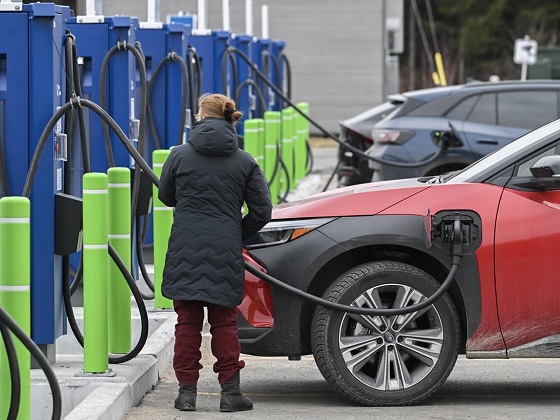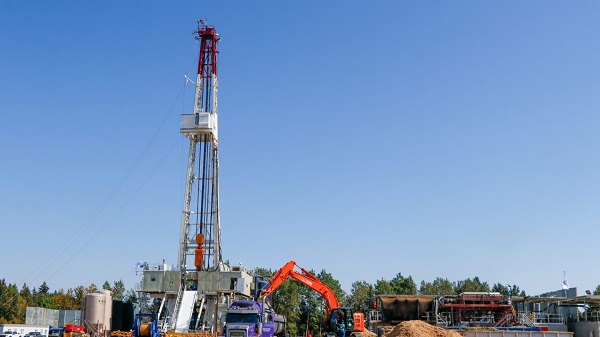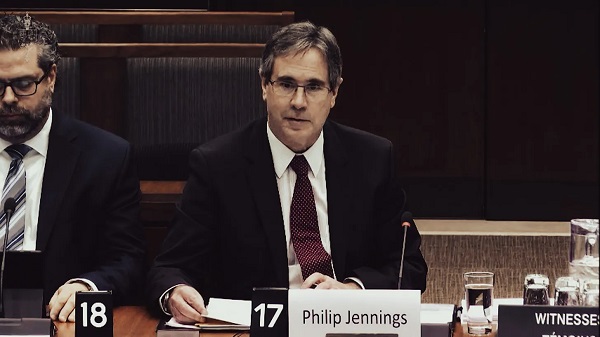Business
Carney dropped the ball on tariffs

This article supplied by Troy Media.
A 35 per cent U.S. tariff slams Canadian agri-food and puts farmers, jobs and grocery bills at risk
Canada has stumbled into its worst trade crisis in a generation.
On Aug. 1, while Mexico secured a reprieve, Ottawa failed to secure a deal before the tariff deadline, and now Canadian agri-food producers face a crushing 35 per cent U.S. tariff. For farmers and consumers alike, this isn’t a policy tweak. It’s a gut punch.
A tariff this steep is almost unheard of between close trading partners. It effectively prices many Canadian goods out of the U.S. market overnight.
Prime Minister Mark Carney—the seasoned economist who campaigned on his negotiating acumen and international gravitas—is failing. Instead of delivering results, Parliament was sent home for the summer, and Ottawa’s silence echoed through what is arguably Canada’s most consequential trade dispute in a generation.
To be clear, not all food exports are affected. Products covered under USMCA quotas—dairy, poultry and some meat—remain exempt. But for producers of grains, oilseeds, processed foods and niche value-added products, this 35 per cent tariff is a major blow.
Margins in agri-food are notoriously thin. For many exporters, the choice is binary: absorb the cost or exit the U.S. market. Either path reduces revenues, heightens the risk of layoffs and weakens Canada’s competitive position. With the U.S. absorbing over half of our agrifood exports annually, this is no minor hiccup: it’s a strategic failure. No other market comes close to absorbing that volume, meaning Canadian farmers have few real alternatives if the U.S. door slams shut.
This U.S. tariff is part of a troubling pattern. Canadian farmers are already facing stiff tariffs in other key markets. India continues to impose duties on Canadian lentils and pulses, while China maintains restrictions and tariffs on pork, canola and lobster. For a trading nation, these accumulating barriers are suffocating, yet Ottawa has focused more on damage control instead of prevention.
Forget the talk of silver linings. Tariffs may occasionally shift some production northward, as in the cocoa and chocolate supply chain, but these are rare exceptions. The real story is one of uncertainty, rising input costs and declining production volumes.
Consumers will feel it at the checkout. That means Canadians could soon be paying more for everyday staples—from bread and pasta to cooking oils and packaged goods—even if those products are made at home. But the damage doesn’t stop there; tariffs also wreak havoc upstream, disrupting input sourcing, contract logistics and production planning. Expect more volatility in prices, sporadic availability of staple ingredients and even empty shelves for certain products.
Compounding this are retaliatory tariffs and ripple effects through global supply chains. Many Canadian food manufacturers depend on imported inputs—machinery, additives, packaging—that are themselves caught in the crossfire. Inflationary pressures will persist, even if headline food inflation slows. These ripple effects are serious, but what makes them catastrophic is Ottawa’s failure to act. What’s most alarming isn’t the tariff itself, but the absence of a coordinated Canadian response.
Washington gave plenty of notice. And yet, no contingency plan emerged, no strategy was communicated and no evidence of serious negotiation surfaced.
Supporters of Bill C-202, which extends tariff protections for supply-managed sectors such as dairy and poultry, may take solace in the temporary shielding it provides. But that’s little comfort for the rest of the agri-food economy, and let’s not pretend supply management is immune to geopolitical pushback. It is, at best, a partial solution in an increasingly complex trade environment.
The bottom line: Canada once led in global trade diplomacy. Today, we are reactive, overly reliant on past frameworks and slow to acknowledge that trade has become a geopolitical chessboard, not a rules-based playground.
The agri-food sector—which accounts for nearly one in nine jobs and close to seven per cent of Canada’s GDP—deserves more than summer recesses and bureaucratic platitudes. It requires decisive leadership, policy agility and a proactive strategy to preserve market access and stabilize domestic food systems.
If Carney hopes to reset the narrative this fall, he’ll need to do far more than issue statements. Targeted tariff relief, short-term support for exposed sectors and a clear diplomatic pathway with Washington must be top priorities. Without this, more markets will close, more family farms will shutter and more grocery bills will climb.
Dr. Sylvain Charlebois is a Canadian professor and researcher in food distribution and policy. He is senior director of the Agri-Food Analytics Lab at Dalhousie University and co-host of The Food Professor Podcast. He is frequently cited in the media for his insights on food prices, agricultural trends, and the global food supply chain.
Troy Media empowers Canadian community news outlets by providing independent, insightful analysis and commentary. Our mission is to support local media in helping Canadians stay informed and engaged by delivering reliable content that strengthens community connections and deepens understanding across the country.
Automotive
Power Struggle: Governments start quietly backing away from EV mandates

From Resource Works
Barry Penner doesn’t posture – he brings evidence. And lately, the evidence has been catching up fast to what he’s been saying for months.
Penner, chair of the Energy Futures Institute and a former B.C. environment minister and attorney-general, walked me through polling that showed a decisive pattern: declining support for electric-vehicle mandates, rising opposition, and growing intensity among those pushing back.
That was before the political landscape started shifting beneath our feet.
In the weeks since our conversation, the B.C. government has begun retreating from its hardline EV stance, softening requirements and signalling more flexibility. At the same time, Ottawa has opened the door to revising its own rules, acknowledging what the market and motorists have been signalling for some time.
Penner didn’t need insider whispers to see this coming. He had the data.

Barry Penner, Chair of the Energy Futures Institute
B.C.’s mandate remains the most aggressive in North America: 26 per cent ZEV sales by 2026, 90 per cent by 2030, and 100 per cent by 2035. Yet recent sales paint a different picture. Only 13 per cent of new vehicles sold in June were electric. “Which means 87 per cent weren’t,” Penner notes. “People had the option. And 87 per cent chose a non-electric.”
Meanwhile, Quebec has already adjusted its mandate to give partial credit for hybrids. Polling shows 76 per cent of British Columbians want the same. The trouble? “There’s a long waiting list to get one,” Penner says.
Cost, charging access and range remain the top barriers for consumers. And with rebates shrinking or disappearing altogether, the gap between policy ambition and practical reality is now impossible for governments to ignore.
Penner’s advice is simple, and increasingly unavoidable: “Recognition of reality is in order.”
- Now watch Barry Penner’s full video interview with Stewart Muir on Power Struggle here:
Business
New Chevy ad celebrates marriage, raising children

From LifeSiteNews
By Matt Lamb
Chevrolet’s new Christmas ad portrays the ups and downs of family life and the fun of parenting.
Car company Chevrolet launched its Christmas ad campaign with a beautiful commercial that highlights the messiness of raising kids while championing the value of having a family.
The ad, titled “Memory Lane,” shows a middle-aged married couple loading up their decades-old Chevy Suburban with food to head off to a family dinner. At this point, the ad switches between the couple in the present day and grainy, recorder-quality video of family memories.
It begins with a young family, including a baby, loading up into the same car. As the couple begins to drive, the wife and mom is reminiscing. The husband asks her not to “keep all the good stuff” to herself.
From there, the ad reflects on the ups and downs of the family’s life, including memories of mistakenly tying a Christmas tree to the car door and comforting their college-aged daughter about a break-up. As the couple pulls up to a house at the end of their trip, the wife turns to her husband and says: “They never made it easy, did they?”
“Did you want it to be easy?” he replies.
“No, I wanted it to be just like it was,” she says, before they exit the car to meet family, including a grandchild and a new dog that looks like their old dog.
“The greatest journey is the one we take together,” the ad ends.
Commercial accurately portrays that family life isn’t easy, but it is fun
Anyone who has kids knows that it is not always easy raising them, but it is enjoyable. They scream, they cause messes, they wake you up in the middle of the night. And that’s just before they turn five years old. It only gets more enjoyable, and more difficult, as they age (from what I can tell).
Even if you do not have kids, you can probably remember your own life and think about the ways you caused your parents headaches (getting a bad grade in a class or breaking the curfew), but also the ways you brought them joy (graduating from college, joining the military, or getting married).
The truth is that families are messy, and no one is guaranteed an easy life. But the important thing is to persevere by sticking together.
Another thing that stuck out is that both parents remained married throughout their life and are celebrating Christmas with both of their children.
One of the kids did not avoid Christmas because dad voted for Trump or because mom has strongly held religious beliefs – something that does happen to the glee (and detriment) of leftist writers. The entire family, not just those who perfectly agree with each other, were together for the holidays. In fact, this is one way we honor our father and mother, by getting together over the holidays and at other family gatherings.
As a parent myself, I sometimes wish it would be “easy,” but the truth is the ups and downs are what make it enjoyable.
Thank you to Chevy for reminding me, and other parents, of this lesson.
-

 National2 days ago
National2 days agoMedia bound to pay the price for selling their freedom to (selectively) offend
-

 Business2 days ago
Business2 days agoIs there a cure for Alzheimer’s Disease?
-

 C2C Journal2 days ago
C2C Journal2 days agoLearning the Truth about “Children’s Graves” and Residential Schools is More Important than Ever
-

 Bruce Dowbiggin2 days ago
Bruce Dowbiggin2 days agoSometimes An Ingrate Nation Pt. 2: The Great One Makes His Choice
-

 Alberta2 days ago
Alberta2 days agoNew era of police accountability
-

 Brownstone Institute2 days ago
Brownstone Institute2 days agoThe Unmasking of Vaccine Science
-

 Alberta2 days ago
Alberta2 days agoEmissions Reduction Alberta offering financial boost for the next transformative drilling idea
-

 Business20 hours ago
Business20 hours agoRecent price declines don’t solve Toronto’s housing affordability crisis








